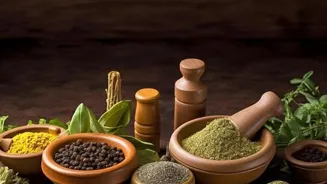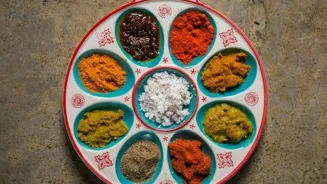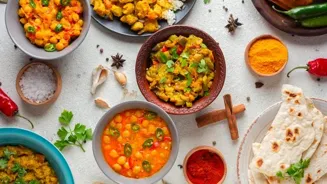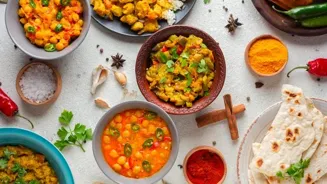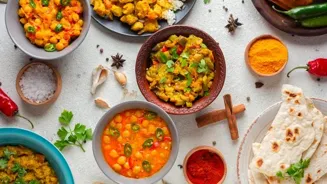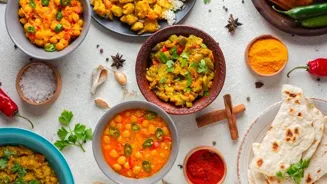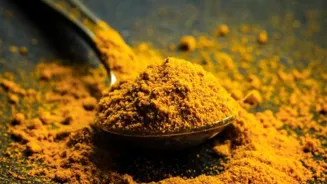Unlock the secrets of Indian cooking with 5 essential tips! Spice up your culinary journey now
Indian cuisine, with its vibrant colours, aromatic spices, and diverse flavours, is a culinary landscape waiting
to be explored. For many, the prospect of recreating these dishes at home can seem daunting, a maze of unfamiliar ingredients and complex techniques. But fear not, aspiring home cooks!
Mastering Indian cooking is achievable with a few key principles and a dash of enthusiasm. Here, we present five essential tips to guide you on your culinary journey, transforming you from a novice to a confident creator of delicious Indian meals.
So, grab your apron, sharpen your knives, and get ready to unlock the secrets of this incredible cuisine!
The Spice Rack is Your Best Friend: Understanding and Using Spices
Spices are the heart and soul of Indian cooking. They are not merely flavour enhancers but integral components that define the character of each dish. It's crucial to move beyond simply knowing the names of common spices like turmeric, cumin, coriander, and chili powder.
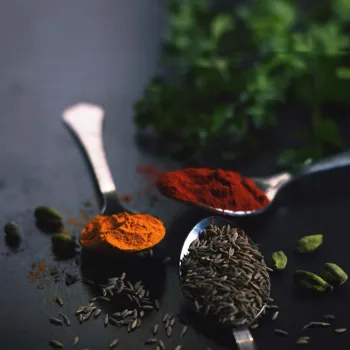
You need to understand their individual flavour profiles and how they interact with each other. Is turmeric earthy and subtly bitter, while coriander offers a citrusy and warm note? Cumin brings a smoky depth, and chili powder provides the desired level of heat.
Experiment with different spice blends like Garam Masala, Tandoori Masala, and Sambar Masala to discover your preferences. Don't be afraid to roast whole spices lightly before grinding them to unlock their full aroma and flavour.
Always store your spices in airtight containers away from direct sunlight and heat to preserve their potency. Over time the spices will lose their potency. Investing in good quality spices is the first step towards achieving authentic Indian flavour. Most Indian dishes use one or more spices.
Investing in good quality spices will make your dish better and it will taste and smell fantastic. Ensure you explore the different spices and its flavour profile when added to a dish.
Mastering the Art of Tadka: The Tempering Technique
Tadka, also known as tempering, is a signature technique in Indian cooking that involves heating oil or ghee and then adding whole spices, herbs, and aromatics to infuse the oil with their flavour before adding it to a dish.
This process not only enhances the flavour but also adds a textural element. This is a technique that is used in most of the Indian dishes and it is a primary step.
The sequence in which you add ingredients to the tadka matters.
Typically, you start with whole spices like cumin seeds and mustard seeds, allowing them to sizzle and release their aroma. Then, you might add ingredients like asafoetida (hing), dried chilies, curry leaves, and chopped garlic or ginger.
Be careful not to burn the spices, as this can result in a bitter taste.
Tadka is often used at the end of cooking to finish a dish and add a final layer of flavour and visual appeal. However, it can also be used at the beginning to build the flavour base. Learn the subtle art of tadka.
It can make the dish yummy. This adds a distinct flavor to the dish. It can be used in lentils or vegetables.
The Foundation of Flavour: Building a Good Base (Gravy) for Indian Dishes
Many Indian dishes rely on a well-prepared base gravy, also known as a "masala," which serves as the foundation of flavour. This base typically consists of onions, tomatoes, ginger, garlic, and a blend of spices, cooked down slowly until it forms a rich and aromatic paste.
The key to a good base is patience and proper technique. Sauté the onions until they are translucent and softened, then add the ginger and garlic and cook until fragrant. Next, add the tomatoes and spices and cook until the tomatoes have broken down and the mixture has thickened.
Constant stirring is necessary to prevent the base from sticking to the pan and burning along the bottom.
The perfect base gravy can elevate any dish. Experiment with different bases like Tomato onion, cashew based gravy and white gravy for varied flavors.
Lentils and Legumes: Comfort Food and Nutritional Powerhouses
Lentils and legumes are staple ingredients in Indian cuisine, offering a wealth of plant-based protein, fibre, and essential nutrients. From creamy dal makhani to spicy chana masala, these humble ingredients are transformed into flavorful and satisfying dishes.
Different lentils and legumes require different cooking times. Split red lentils (masoor dal) cook relatively quickly, while whole black lentils (urad dal) can take several hours. Soaking lentils before cooking helps to reduce cooking time and improve their digestibility.
Some dal recipes require more than one Lentils.
Experiment with different lentil and legume varieties and recipes to discover your favorites. They are delicious, nutritious, and versatile. Lentils are good source of proteins.
The Art of Layering Flavours: A Delicate Dance of Taste.
Indian cooking is not about simply throwing a bunch of spices into a pot. It's about layering flavours to create a complex and harmonious taste profile. This involves adding ingredients in a specific order, allowing each flavour to develop and meld with the others.
Start with the aromatics like ginger, garlic, and onions, which release their flavour as they cook in the oil or ghee. Then, add the spices, allowing them to toast and bloom, releasing their aroma.
Next, add the main ingredients, like vegetables or lentils, and cook until they are tender and infused with the flavour of the spices. Finish with herbs, fresh ginger, or a squeeze of lemon juice to brighten the dish and add a final layer of flavour.
Don't be afraid to taste as you go and adjust the seasoning as needed. The key is to create a balance of sweet, sour, salty, and spicy notes that tantalizes the taste buds. This comes with practice. Taste the food and adjust accordingly. The beauty of food lies in the taste.
AI Generated Content. Glance/InMobi shall have no liability for the content
